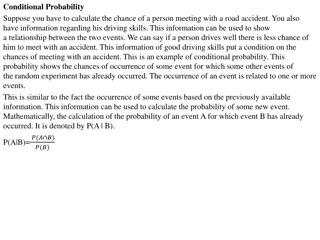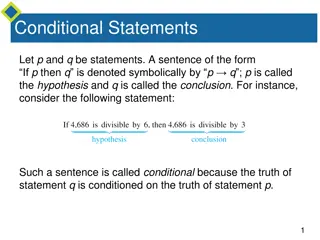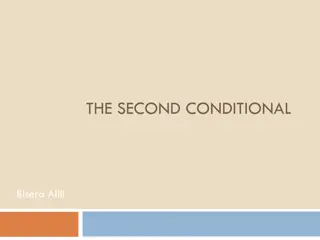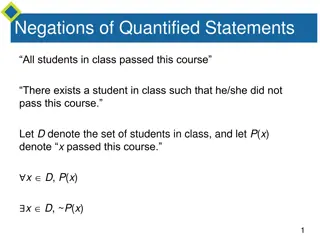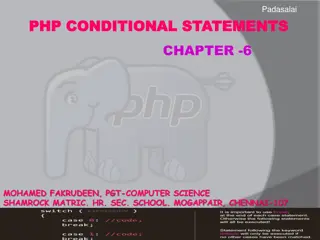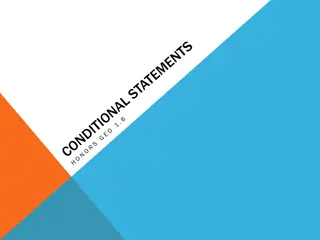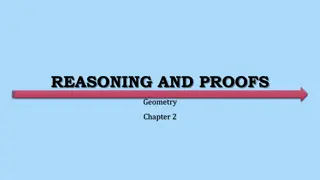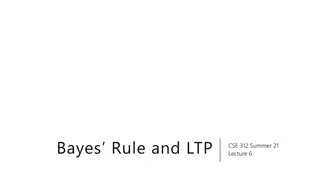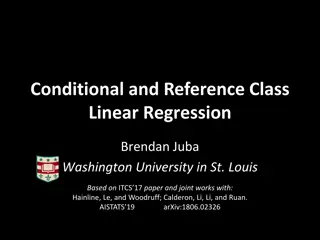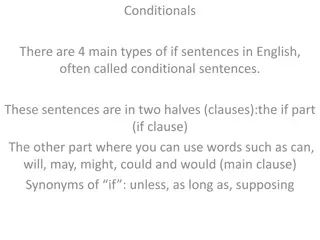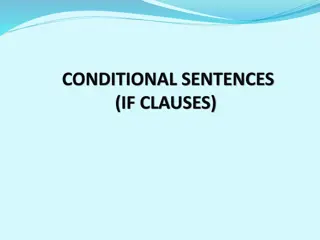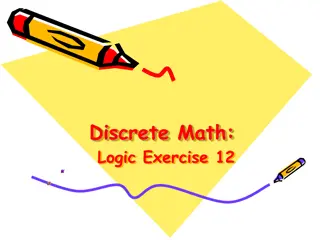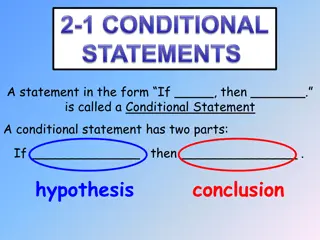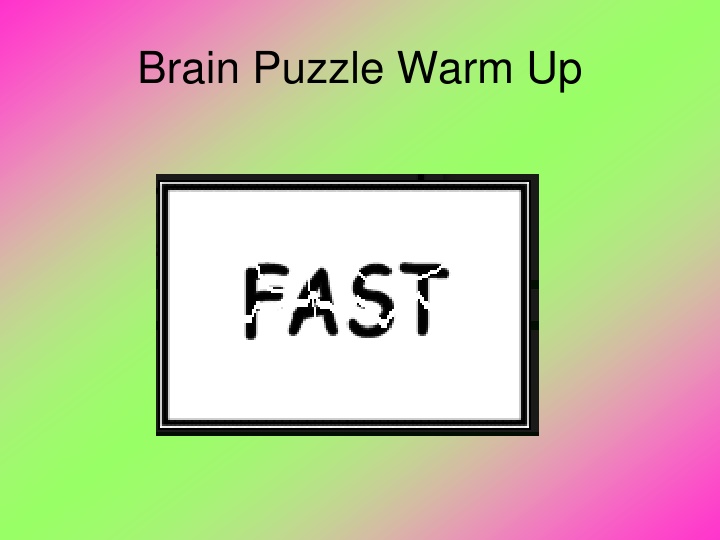
Conditional Statements and Logic Proofs
Explore the concept of conditional statements in logic proofs, learning to identify hypotheses and conclusions. Discover how to rewrite statements and find the converse in an engaging educational journey.
Download Presentation

Please find below an Image/Link to download the presentation.
The content on the website is provided AS IS for your information and personal use only. It may not be sold, licensed, or shared on other websites without obtaining consent from the author. If you encounter any issues during the download, it is possible that the publisher has removed the file from their server.
You are allowed to download the files provided on this website for personal or commercial use, subject to the condition that they are used lawfully. All files are the property of their respective owners.
The content on the website is provided AS IS for your information and personal use only. It may not be sold, licensed, or shared on other websites without obtaining consent from the author.
E N D
Presentation Transcript
Unit 2: Introduction to Proofs and Logic
Essential Question: Why are some statements biconditional and other statements aren t? Objectives: I will learn about if-then statements, converses, and biconditional statements? I will be able to interpret whether a statement is true or false
A statement in the form If _____, then _______. is called a Conditional Statement A conditional statement has two parts: If ______________ , then _______________ . hypothesis conclusion
Examples: Identify the Hypothesis and Conclusion of each conditional statement. Ex1: If today is Monday, then yesterday was Sunday. Hypothesis: Today is Monday. Conclusion: Yesterday was Sunday.
Examples: Identify the Hypothesis and Conclusion of each conditional statement. Ex2. If x = 5, then 2x = 10. Hypothesis: x = 5 Conclusion: 2x = 10. Ex3. If x = 6, then x2 = 36. Hypothesis: x = 6 Conclusion: x2 = 36.
Rewriting conditional statements into the if then format. Ex4) 3x + 2 = -13 implies that x = -5. Rewrite as If 3x + 2 = -13, then x = -5. Hypothesis: 3x + 2 = -13 Conclusion: x = -5
Ex5) A number is divisible by 2 if it is divisible by 6. Rewrite as If a number is divisible by 6, then it is divisible by 2. Hypothesis: A number is divisible by 6. Conclusion: The number is divisible by 2.
Ex6) ?2= 25 ???? ?? ? < 10 Rewrite as ?? ?2= 25 ? ?? ? < 10 Hypothesis: ?2= 25 Conclusion: ? < 10
To find the converse of a conditional statement, you switch the hypothesis and conclusion. Ex7: If today is Monday, then yesterday was Sunday. Hypothesis: Today is Monday. Conclusion: Yesterday was Sunday. Converse: If yesterday was Sunday, then today is Monday.
Not all converses will be true!! Ex8. If you live in Doylestown, then you live in Pennsylvania. Hypothesis: Conclusion: You live in Doylestown. You live in Pennsylvania. Converse: If you live in Pennsylvania, then you live in Doylestown. Is this converse true? No.
In order to prove the converse is false, you must provide a counterexample. A counterexample is an example for which the hypothesis is true, but the conclusion is false. Counterexample: You live in Chalfont.
Example: For the conditional statement, a) identify the hypothesis and conclusion, b) write the converse of the statement and determine if the converse is true or false. c) If the converse is false, provide a counterexample. If x , 5 then x . 5 Ex9) = = x = 5 a) Hypothesis: x = -5 Conclusion: If x , 5 then x . 5 b) Converse: False = = c) Counterexample: x = 5.
Biconditional Statements use the phrase if and only if to indicate when a conditional and its converse are both true. If tomorrow is Thursday, then today is Wednesday. Rewrite: Tomorrow is Thursday if and only if today is Wednesday.
You can rewrite definitions as biconditionals. Ex1. Congruent segments are segments that have equal lengths. Segments are congruent if and only if their lengths are equal. Ex2. Coplanar points are points all in one plane. Points are coplanar if and only if they all lie in one plane.
Ex3. Complementary angles are two angles whose measures add up to 90 . Two angles are complementary if and only if their measures add up to 90 .
Classwork PAGE 34, #1-6, 12-15
Reasoning Deductive Conclusion based on accepted statements Definitions, postulates, previous theorems, and given information Conclusion must be true if hypotheses are. Inductive Conclusion based on several past observations Conclusion is probably true, but not necessarily true.
Examples Deductive All numbers ending in 0 or 5 are divisible by 5. The number 35 ends with a 5, so it is divisible by 5. Inductive After picking marigolds for the first time, Connie began to sneeze. She also began sneezing the next four times she was near marigolds. Based on this past experience, Connie reasons inductively that she is allergic to marigolds.
Classwork PAGE 107, #1-6
Homework Page 35, #1-6, 17-22


